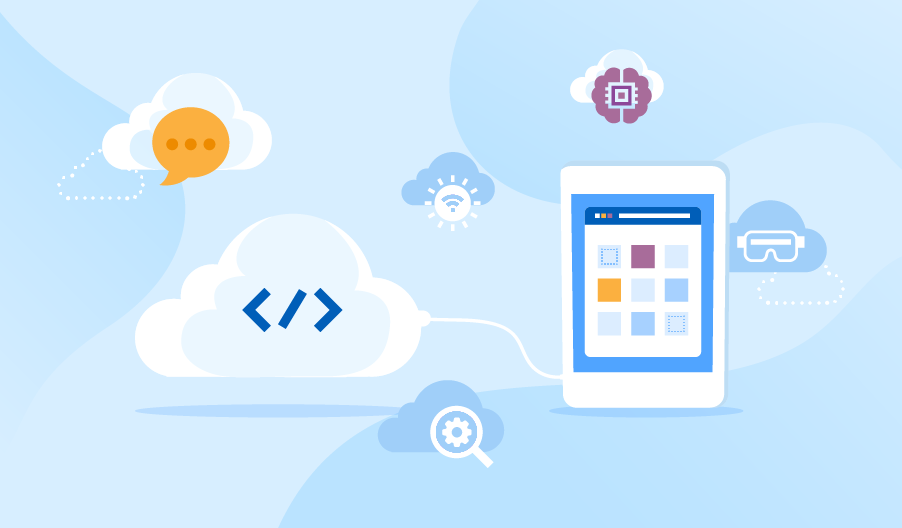Cloud-Native App Development
loud-native development is currently one of the most popular cloud usage scenarios. However, we at Itqsoft see that many businesses still have doubts about this cloud adoption approach. In the article, I want to give a sound explanation of what cloud-native apps are, how they are created and deployed, and what makes them so appealing for the modern business world.

What is a cloud-native application?
Cloud-native applications are purposely built to take advantage of the cloud elasticity and scalability and multiple cloud services (messaging, service discovery, AI, VR, IoT, data science, and more) offered by cloud providers.
Why build cloud-native applications?
The cloud-native approach to software development helps:
-
- Speed up application development and updates to achieve faster time to market.
- Keep an application highly available even in case of overloads or a significant increase in the number and complexity of user requests.
- Reduce development costs due to the use of cloud services.
- Save significant operation costs through paying only for the time cloud services and resources are rented.
- Accelerate the business’ ability to innovate due to easy access to high-performance processors, analytics services, AI services.
ow to go cloud-native?
Cloud-native development entails a set of architectural, development and operational decisions that allow for the proper usage of cloud services and capabilities. At Itqsoft , we base cloud-native application development on the following practices:
Splitting an application in microservices and getting it containerized
For an app to benefit from cloud scalability, easy portability and high resilience, it should be subdivided into small isolated components. Thus, we design cloud-native applications as a set of loosely coupled, purpose-centered microservices that exist and operate independently and communicate with each other via lightweight APIs. You can see the benefits of the microservices-based architecture on the example of Itqsoft `s project on hotel self-service app development.
I also recommend packaging each service into containers with the required operating system and dependency libraries. The use of containers helps reduce the complexity of distributed application management and to further simplify its scalability and portability.
Eliminating the possibility of failure escalation
Since a cloud-based application owner can’t control the public cloud infrastructure, cloud-native app architecture should be designed under the assumption that components can fail and their failure should bring minimum disruption to the work of other components and the system on the whole. Among the best practices for application resilience, I can name tree hierarchies of services, message queues, dynamic scaling and automated recovery.
Automating integration, testing, infrastructure management, and monitoring
Automation is essential to complex distributed systems for rapid development and continuous improvement with frequent releases. As manual efforts are too slow and error-prone to guarantee that, robust automation for a cloud-native application helps keep the app well-tested, secure, reliable and scalable.
Leveraging value-adding cloud services
The usage of cloud services helps minimize efforts and costs to develop and operate an application. Established cloud providers offer a myriad of available services, including queueing systems (AWS SQS), managed data services (AWS RDS, Azure SQL Database), security services (AWS LAM), DevOps services (AWS CodePipeline, Azure Pipelines) application analytics services (AWS Data Pipeline), and many more.
Cloud services also make innovating and inventing more accessible. According to the recent research by Flexera, IoT and machine learning are among the top growing cloud services.
What languages are used in cloud-native app development?
Basically, any web programming language can be used for cloud-native application development. However, the support for concurrency, parallel algorithms, composability, asynchronous and reactive programming, and frameworks for microservices architectures will be a significant plus. Also, it’s a common practice to choose the language of the cloud services used in the project. Or to take the polyglot strategy and use a specific language for a specific case.
As my practice shows, the leading positions in cloud development belong to .Net, Java, Python, Node.js and Golang, which are actively supported by major cloud providers. Each language has its own strength in specific cases, for example, Golang can be used for concurrency and Java/Scala for streaming processes. To find out more details about the languages used for cloud computing, check out our dedicated article.
Experience only fast and efficient cloud-native apps
I’ve presented just a quick look at the essence of cloud-native applications. Moving further, building cloud-native applications involves such practices as external configuration, health and metrics monitoring, service registry and service discovery, dynamic scheduling, multi-cloud implementation, and more. If you’re not sure your in-house team can cover all aspects of cloud-native development on their own, Itqsoft `s experts will be glad to give assistance with professional cloud-native development, just give them a shout.

